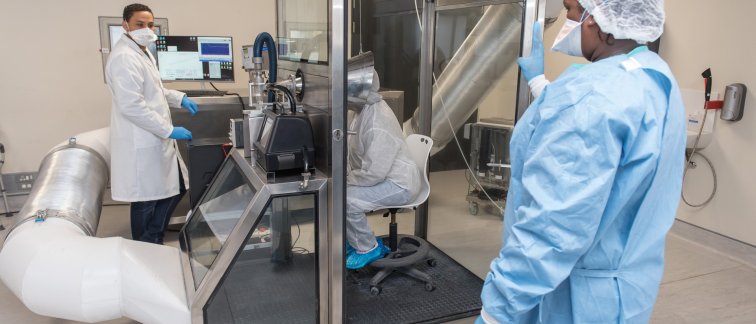People living in communities with a high burden of tuberculosis (TB) may encounter the bacterium responsible for the disease multiple times per year, possibly up to five times, without necessarily becoming infected. Amsterdam institute for Immunology and Infectious diseases (AI&I) and Amsterdam Public Health (APH) members Sabine Hermans and Frank Cobelens contributed to the research together with lead author Benjamin Patterson (St George’s Hospital, London and former PhD-candidate Amsterdam UMC) and Robin Wood (University of Cape Town and Desmond Tutu Health Foundation).
In the new study published in Scientific Reports (Nature Portfolio), the researchers modelled data from highly sensitive breath sampling studies conducted in Cape Town, South Africa. The findings suggest that individuals in these communities are exposed to Mycobacterium tuberculosis (Mtb) far more frequently than previously assumed.
The study raises important questions about current TB prevention strategies. If people are repeatedly exposed without becoming infected, simply reducing exposure may not be an effective standalone approach to preventing new cases of TB.
Aerosolized Mycobacterium tuberculosis and airway colonisation
A particularly significant observation is the detection of aerosolized Mtb in people with negative tests for latent TB. Dr. Benjamin Patterson, lead author of the study, explains: ‘It’s early to draw any strong conclusions as we only have limited data, but the finding of aerosolized Mtb in people without infection (positive immunoreactivity tests) may be best interpreted as a state of airway colonisation. There’s no evidence at this point that these individuals can transmit Mtb but it is plausible. This may suggest that, particularly in high burden settings, TB can be acquired from individuals without any symptoms or evidence of TB disease.’
This insight challenges the traditional view that only symptomatic individuals contribute to TB transmission, and suggests that the dynamics of infection and transmission may be more complex than previously thought. As a result, these findings underline the need for comprehensive prevention strategies that go beyond merely reducing exposure. Effective approaches should also address factors such as immune clearance from the airways, environmental conditions, and long-term transmission dynamics.
Breath sampling technique and future directions
The breath sampling technique used in the study involved participants seated in a controlled booth while breathing into a cone fitted with a liquid cyclone collector designed to capture airborne Mtb. This method allowed researchers to detect the presence of Mtb in the airways, even in individuals who showed no symptoms of active disease.
However, as Dr. Patterson notes: ‘The sampling apparatus is designed as a research tool and not operationalised for clinical use. Simpler devices optimised to sample the aerosol component of exhaled breath may be capable of being deployed outside of a lab setting but it remains unclear what the value of this would be.’
The next steps for the research include replicating these findings by sampling more individuals across a range of settings to determine if the results are consistent and reproducible. To facilitate this, the team plans to develop a simpler apparatus, ideally using exhaled breath condensates.
For more information contact Ben Patterson (patterson.b@unic.ac.cy), Sabine Hermans (s.m.hermans@amsterdamumc.nl) or Frank Cobelens (f.g.cobelens@amsterdamumc.nl), or read the scientific publication below:
Amsterdam UMC researchers involved
Ben Patterson1, PhD candidate at Amsterdam UMC from DEC2018 until FEB2025
Sabine Hermans1, Principal Investigator
Frank Cobelens1, Professor of Global Health
1 Amsterdam Institute for Immunology and Infectious diseases (AI&I), Infectious diseases, Amsterdam UMC, the Netherlands
Funding
The breath sampling work was funded by the South African Medical Research Council and the NIAID. The modelling study itself was not funded.
Image: Aerobiology lab setup.

